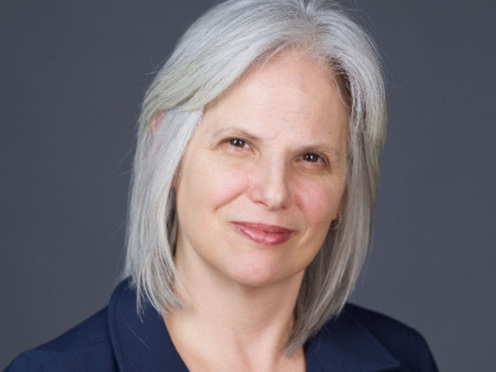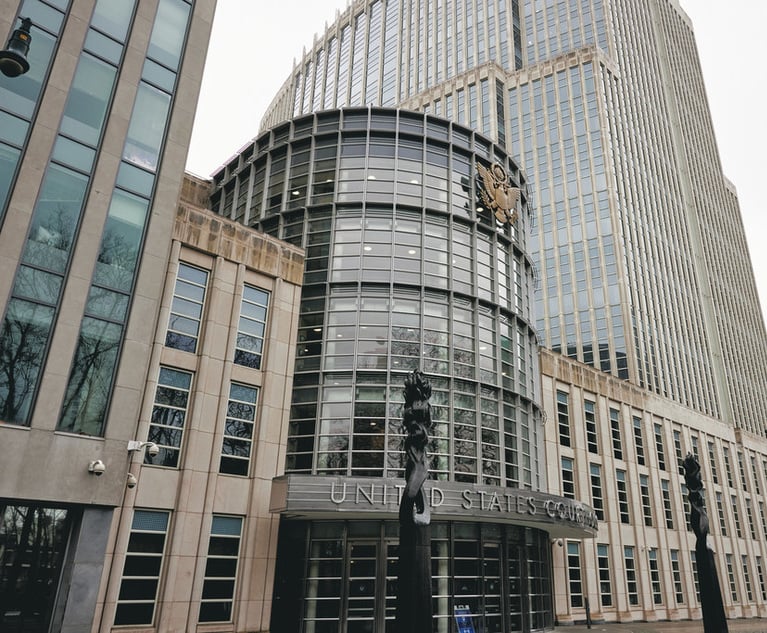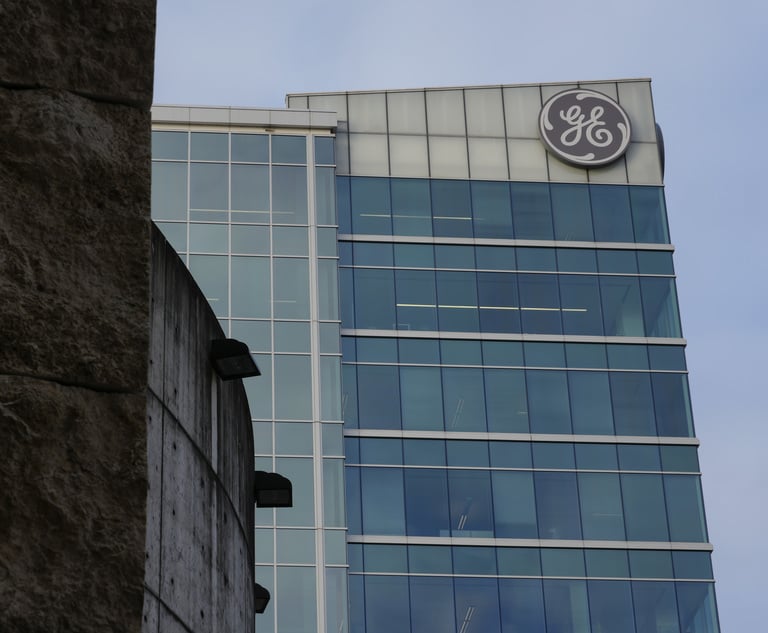Mandatory Mediation of Riot-Related Insurance Claims
Mandatory mediation is now the law in New York modeled on the Super-Storm Sandy prototype . Will it achieve the same success as past mass disaster mandatory mediation programs?
July 03, 2020 at 10:30 AM
10 minute read
 Linda Gerstel
Linda Gerstel
Protesters have come out in droves across the United States to speak out against the killing of George Floyd, an unarmed black man who died after a white Minneapolis police officer knelt on his neck for eight minutes and forty-six seconds—the latest incident of brutality against African-Americans. While the protests have been largely peaceful, some people have used the unrest as an opportunity to vandalize and loot stores in cities, including New York, Los Angeles and Minneapolis. The civil unrest comes as business owners continue to cope with the economic impact of the COVID-19 outbreak, which also required them to analyze the fine print of their insurance policies.
The first New York decision addressing business interruption and insurance regarding COVID-19 claims ruled in favor of the insurer and against the policyholder—finding that actual property damage is required to trigger business interruption coverage. See Social Life Magazine Inc. v Sentinel Ins. Co., 1:20-cv-03311-VEC (Dkt 24-1, S.D.N.Y., May 14, 2020 However, some recent COVID-19 cases including one by a French Court, have resulted in findings of coverage in favor of policyholders, including the recent headlines in this Journal regarding the global insurer AXA concerning business interruption claims by a group of restaurants. See, Turner, Heather, AXA Vows to Pay Claims After Losing French Court Battle. (May 26,2020) www.law.com
While there's been a debate about whether business-interruption insurance covers retailers' pandemic-related losses, property damage from riots, civil commotion and vandalism are generally covered under standard policies. The fact that the timing of these losses comes on the heels of the pandemic makes the hit on businesses losses somewhat complicated. The insurance industry has argued that business-interruption coverage would not pay for virus losses because of a physical-damage requirement—an issue now being fought over by business owners, attorneys and lawmakers. Some argue that the situation is clearer when there are broken storefronts from looting. Absent exclusions, policies typically provide coverage for damaged premises, property and inventory—measures taken to protect property from vandalism and business interruption.
Scope of Riot Claims
Verisk's Property Claims Service declared the riots a "catastrophe event," which means it projects damages of more than $25 million. Sam, Jim Insured Losses From Riots Reach Catastrophic Levels May Rival Record (June 2, 2020), www.claimsjournal.com; Bloomsfield, Elizabeth, Insurers Prepare for Claims on East States: Property Damage from Civil Unrest (June 4, 2020), www.insurancejournal.com. The Insurance Information Institute estimates that 40% of small- and medium-size businesses are protected by business interruption coverage.
Reporters have already placed the damages expected from this civil unrest in the context of past civil unrest losses, including damages related to the riots of 1968 and, the more recent in our memories, the 1992 Los Angeles riots following the acquittal of four police officers in the beating of Rodney King. According to the Insurance Information Institute, an industry-funded consumer education association, insurers paid policyholders $775 million at that time—adjusted for inflation the figure would be $1.4 billion. Wilkinson, Claire, Riot Losses Mount as Pandemic Complicates Losses of Insurance Claims (June 1, 2020), www.businessinsurance.com.
It is difficult to project at the moment how many of the riot-related insurance claims in New York may relate to claims by individuals or small businesses. A recent article in the Wall Street Journal estimates that 450 businesses across New York City were vandalized. Kate, King Hundreds of New York City Businesses Were Damaged, Looted in Recent Unrest (June 12, 2020) www.wsj.com. The news coverage certainly focused on looting that was directed at major fashion retailers, like Macy's and Nike, as well as high-end retailers in SoHo. Yet, there was also substantial news coverage of damage to small businesses, Mom & Pop stores, and businesses with significant immigrant populations and Black storeowners. With regard to these business owners, New York has offered some avenue of relief.
Emergency Amendment for Riot Claims
On June 4, 2020, the New York Department of Financial Services (NYDFS) issued an emergency amendment to New York's Regulation 64— Unfair Claims Settlement Practices and Claim Cost Control Measures. 11 NYCRR 216 (www.dfs.ny.gov). The amendment makes certain changes to NY Regulation 64 with respect to the resolution and payment of claims arising from the recent looting. The regulation only applies to licensed insurers in New York (with limited exception for certain group policies).
Therefore, its requirements do not extend to excess and surplus lines insurers or other insurers that provide coverage for New York risks (e.g., on a direct procurement basis from outside New York), but who are not licensed and therefore not regulated by NYDFS. The emergency amendment addresses claims filed after May 30, 2020, arising out of damage to real property, loss of or damage to personal property, or other liabilities for loss of damage to or injury to persons or property that resulted from the recent looting in New York.
There are three key points under the emergency amendment which fall into three categories: (i) insurer's processing of claims; (ii) policyholders' rights to repair and proof of loss; and (iii) mandatory mediation at the option of policyholders for individuals and small businesses. First, insurers are required to process and to investigate claims more promptly than usual. Insurers must begin investigating any claims arising from the recent looting within six days after receipt of the claim or June 5, 2020, whichever is later (instead of 15 business days as otherwise required under NY Regulation 64). Insurers must notify claimants regarding all items that will be required for adjustment of the claim within six days after receipt of the claim or June 5, 2020, whichever is later.
In addition, insurers are required to pay the claim or notify the insured that additional time will be needed for claim investigation within 15 days of receiving proof of loss with follow-up letters to be sent every 30 days (compared to 15 business days and 90 days periods, respectively, which usually apply under NY Regulation 64). If the insurer has any specific reasons for delaying the investigation, the insurer is required to provide such reasons and explanations to the policyholder. Insurers are required to provide weekly reports to NYDFS, including every such claim for which the insurers do not adjust and pay within the foregoing time periods.
Second, policyholders are permitted to make immediate repairs to damaged property if needed to protect health or safety. Third, policyholders are permitted to submit claims with reasonable proof of loss, such as video recordings, photographs or receipts of repairs to or replacement of property. In past practices where insurance companies may have required a prerequisite of filing a police report before the assertion of any claim, the amendment seeks to modify any such hurdle. Finally, individuals and small-business policyholders may opt for mandatory mediation option for claims disputes.
Riot Related Insurance Claims
The mandatory mediation option is only available to individuals or small businesses. A small business is defined as a business that is a resident in New York, independently owned and operated, and employs 100 or fewer individuals. The mandatory mediation applies if a claim is denied, disputed or remains unresolved after 45 days. The amendment requires that the insurer pay for the cost of the mediator.
The emergency amendment also imposes various other requirements for such mediations, including that the insurer participate "in good faith" in all mediation proceedings. The mediation may be held face-to face or by video-conferencing. The good-faith requirement provides that insurers bring the policy and claims file to the mediation.
This emergency amendment is similar to an emergency regulation that was passed by NYDFS after Superstorm Sandy in 2012. New York Regulation 64 is based on New York Insurance Law Section 2601 that prohibits insurers doing business in New York from engaging in "unfair claims settlement practices." NYDFS can investigate insurers for violations of NYIL Section 2601 and NY Regulation 64 through market contact exams, which may be prompted by, for example, complaints by policyholders to NYDFS, and can impose fines on insurers for violations.
At the closing of the American Arbitration Association (AAA) Sandy Mediation Program, 3,360 claims were handled in New York with a settlement rate of 63% while the program in New Jersey handled 991 claims with a settlement rate of 67%. www.adr.org/disaster. The AAA has a long and well-regarded history of managing mass disaster programs. The Eastern District of New York had a similar Sandy program handling over 1000 claims with settlement rates of 66% and even higher settlements rates approaching 80% in the period from 2015 to 2016. (www.nyed.uscourts.gov.)
On June 16, 2020, the AAA announced that New York State designated the AAA as the administrator of the mandatory mediation program for commotion/riot related insurance claims and that the mediations would take place virtually and on a fee reduced basis. If the program for mandatory mediation for commotion/riot-related insurance claims is able to mimic the settlement rates of the AAA mediation program in the wake of Sandy, then all parties will benefit. New York State has recently adopted Presumptive ADR, mandatory mediation for most disputes with limited exceptions.
So, these claims would have been headed to mandatory mediation in the courts. Mediation has been gaining broader acceptance as the first-choice method of dispute resolution—and for good reason.
First, mediation offers the potential to maintain and preserve business relationships, which is particularly important for insurance companies who want to maintain business relationships with policyholders with the attendant long life of continued payment of premiums. Second, mediation cuts litigation costs and provides a speedier resolution of claims than claims that are litigated. Given the backlog of cases that were put on freeze as a result of court closures coupled with the onslaught of COVID-19 related claims, plaintiffs will be waiting endlessly for their claims to be resolved.
With New York State's adoption of mandatory mediation last year, many of these claims would have been placed on a mandatory mediation track. This amendment ensures that the claims will be handled in an expeditious fashion and the virtual platform offers a speedier prospect of resolving these claims. Third, parties may gain insight from mediators, who may have a more evaluative style and have insurance-coverage expertise (which may not necessarily be true of all judges).
Finally, mediation in good faith allows insurance companies to publicly promote that they are making efforts to take the moral high ground. The former two factors, expertise and good faith, played a vital role in the success of the AAA Sandy Mediation Program. The AAA carefully staffed the mediation panel with individuals who had insurance coverage expertise and for others the AAA provided substantive training to mediators on insurance coverage.
As a Sandy mediator, I often witnessed the good faith that insurance representatives displayed. There was, in fact, empathy. Much like the words in the title to Spike Lee's film, parties were taking to heart the notion of "Do[ing] the Right Thing." As a mediator, I am hopeful that the same notion will guide the riot-related insurance claims and that other states enact similar programs.
Linda Gerstel is a full-time neutral practicing at GerstelADR and an adjunct professor at Fordham Law School. Kayla Joyce, an intern, assisted in the preparation of this article.
This content has been archived. It is available through our partners, LexisNexis® and Bloomberg Law.
To view this content, please continue to their sites.
Not a Lexis Subscriber?
Subscribe Now
Not a Bloomberg Law Subscriber?
Subscribe Now
NOT FOR REPRINT
© 2025 ALM Global, LLC, All Rights Reserved. Request academic re-use from www.copyright.com. All other uses, submit a request to [email protected]. For more information visit Asset & Logo Licensing.
You Might Like
View All
Insurance Company Sues Over 180 Health Care Providers for Fraud Under RICO
3 minute read
New York Court of Appeals Tightens Pleading Standards Against Insurance Policyholder
7 minute read
Amid Growing Litigation Volume, Don't Expect UnitedHealthcare to Change Its Stripes After CEO's Killing
6 minute read
GE Agrees to $362.5M Deal to End Shareholder Claims Over Power, Insurance Risks
2 minute readTrending Stories
- 1Lawyers' Phones Are Ringing: What Should Employers Do If ICE Raids Their Business?
- 2Freshfields Hires Ex-SEC Corporate Finance Director in Silicon Valley
- 3Meet the SEC's New Interim General Counsel
- 4Will Madrid Become the Next Arbitration Hub?
- 5‘Ripe for SCOTUS’: Ruling Creates Circuit Split on NLRB’s Expanded Monetary Remedies
Who Got The Work
J. Brugh Lower of Gibbons has entered an appearance for industrial equipment supplier Devco Corporation in a pending trademark infringement lawsuit. The suit, accusing the defendant of selling knock-off Graco products, was filed Dec. 18 in New Jersey District Court by Rivkin Radler on behalf of Graco Inc. and Graco Minnesota. The case, assigned to U.S. District Judge Zahid N. Quraishi, is 3:24-cv-11294, Graco Inc. et al v. Devco Corporation.
Who Got The Work
Rebecca Maller-Stein and Kent A. Yalowitz of Arnold & Porter Kaye Scholer have entered their appearances for Hanaco Venture Capital and its executives, Lior Prosor and David Frankel, in a pending securities lawsuit. The action, filed on Dec. 24 in New York Southern District Court by Zell, Aron & Co. on behalf of Goldeneye Advisors, accuses the defendants of negligently and fraudulently managing the plaintiff's $1 million investment. The case, assigned to U.S. District Judge Vernon S. Broderick, is 1:24-cv-09918, Goldeneye Advisors, LLC v. Hanaco Venture Capital, Ltd. et al.
Who Got The Work
Attorneys from A&O Shearman has stepped in as defense counsel for Toronto-Dominion Bank and other defendants in a pending securities class action. The suit, filed Dec. 11 in New York Southern District Court by Bleichmar Fonti & Auld, accuses the defendants of concealing the bank's 'pervasive' deficiencies in regards to its compliance with the Bank Secrecy Act and the quality of its anti-money laundering controls. The case, assigned to U.S. District Judge Arun Subramanian, is 1:24-cv-09445, Gonzalez v. The Toronto-Dominion Bank et al.
Who Got The Work
Crown Castle International, a Pennsylvania company providing shared communications infrastructure, has turned to Luke D. Wolf of Gordon Rees Scully Mansukhani to fend off a pending breach-of-contract lawsuit. The court action, filed Nov. 25 in Michigan Eastern District Court by Hooper Hathaway PC on behalf of The Town Residences LLC, accuses Crown Castle of failing to transfer approximately $30,000 in utility payments from T-Mobile in breach of a roof-top lease and assignment agreement. The case, assigned to U.S. District Judge Susan K. Declercq, is 2:24-cv-13131, The Town Residences LLC v. T-Mobile US, Inc. et al.
Who Got The Work
Wilfred P. Coronato and Daniel M. Schwartz of McCarter & English have stepped in as defense counsel to Electrolux Home Products Inc. in a pending product liability lawsuit. The court action, filed Nov. 26 in New York Eastern District Court by Poulos Lopiccolo PC and Nagel Rice LLP on behalf of David Stern, alleges that the defendant's refrigerators’ drawers and shelving repeatedly break and fall apart within months after purchase. The case, assigned to U.S. District Judge Joan M. Azrack, is 2:24-cv-08204, Stern v. Electrolux Home Products, Inc.
Featured Firms
Law Offices of Gary Martin Hays & Associates, P.C.
(470) 294-1674
Law Offices of Mark E. Salomone
(857) 444-6468
Smith & Hassler
(713) 739-1250






